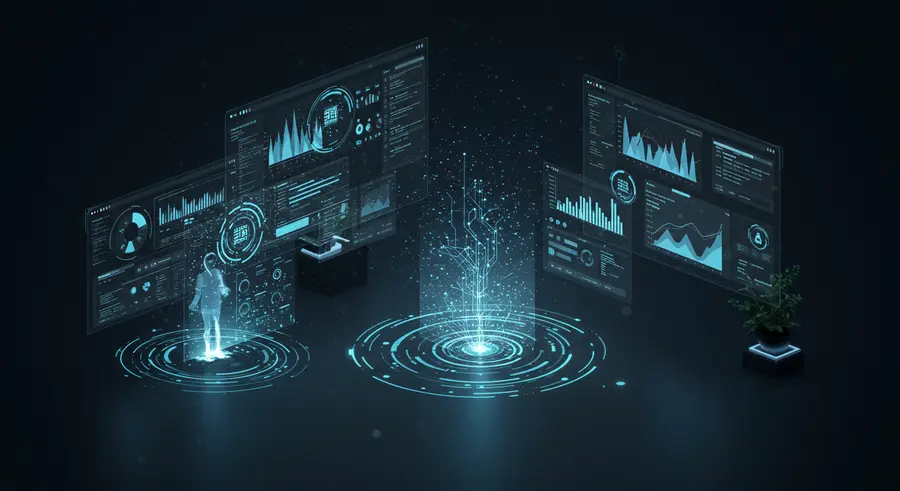Appearance

Welcome, fellow tech explorers! 👋 Today, we're diving deep into an incredibly exciting frontier where two powerful forces of modern web development converge: Artificial Intelligence (AI) and Progressive Web Apps (PWAs). Individually, they've already revolutionized how we interact with digital content. But together? They unlock a new dimension of intelligent, personalized, and robust web experiences that truly feel native, even when they're not!
What are Progressive Web Apps (PWAs)? 🌐
Before we jump into the AI integration, let's have a quick refresher on PWAs. If you're new to the concept, PWAs are essentially websites that are built using modern web capabilities to deliver an app-like experience to users. Think of them as the best of both worlds: the accessibility of the web combined with the rich features of native applications.
Key characteristics of PWAs include:
- Reliable: They load instantly, regardless of network conditions, thanks to Service Workers. These clever scripts run in the background, caching resources and enabling offline functionality.
- Fast: Optimized for performance, PWAs offer smooth animations and quick responsiveness, leading to a much better user experience.
- Engaging: They can be installed on the user's home screen, receive push notifications, and access hardware features, making them feel like true native apps.
To learn more about the foundational elements, check out our deep dive into Core PWA Features: Service Workers and Manifest.
The Dawn of AI-Powered PWAs: A Perfect Pair 💡
Now, imagine taking these already powerful PWAs and infusing them with the intelligence of AI. The result is a web application that doesn't just react to user input but anticipates needs, personalizes experiences, and provides truly smart functionalities. This synergy transforms the web from a static content delivery platform into a dynamic, adaptive, and intelligent ecosystem.
Here's how AI is enhancing PWAs:
1. Hyper-Personalization & Dynamic Content 🎯
AI algorithms can analyze user behavior, preferences, and historical data to deliver highly personalized content and experiences. For PWAs, this means:
- Tailored Recommendations: An e-commerce PWA could use AI to recommend products based on browsing history, past purchases, and even real-time interactions.
- Adaptive UI/UX: The PWA's interface could dynamically adjust based on user engagement patterns, highlighting frequently used features or rearranging content for optimal readability.
- Intelligent Search & Filters: AI-powered search can understand natural language queries and provide more relevant results, even correcting typos or suggesting related items.
2. Enhanced Offline Capabilities & Predictive Analytics 📈
While Service Workers enable basic offline access, AI can take this to the next level:
- Predictive Caching: AI can predict what content a user is likely to access next (e.g., the next article in a series, or products related to current browsing) and proactively cache it, ensuring an even smoother offline experience.
- Offline Data Processing: For certain scenarios, AI models can run client-side within the PWA, allowing for limited data analysis and functionality even without an internet connection.
- Traffic Optimization: AI can analyze network conditions and optimize data transfer, prioritizing critical content and deferring non-essential assets to improve loading times, especially on slower networks.
3. Intelligent User Engagement & Notifications 🔔
AI can make PWA push notifications more relevant and less intrusive:
- Contextual Notifications: Instead of generic alerts, AI can determine the optimal time and context to send a notification, ensuring it's timely and valuable to the user. For example, a travel PWA might send a flight status update just before departure, considering current traffic conditions.
- Sentiment Analysis for Support: AI-powered chatbots integrated into a PWA can understand user sentiment and route complex queries to human support only when necessary, providing instant answers for common questions.
- Personalized Reminders: A PWA for fitness tracking could use AI to send personalized workout reminders based on the user's past activity and goals.
4. Voice and Image Recognition Integration 🗣️📸
As AI capabilities expand, so does their integration into PWAs:
- Voice Search & Commands: Users can interact with PWAs using voice commands, making hands-free navigation and input a reality.
- Image Recognition for Product Discovery: Imagine a retail PWA where you can snap a photo of an item you like, and AI identifies similar products available in the store.
- Accessibility Enhancements: AI can power real-time translation, descriptive audio for images, or intelligent screen readers, making PWAs more accessible to a wider audience.
Real-World Examples & Future Outlook 🌍
While AI-powered PWAs are still an evolving field, we're already seeing glimpses of their potential. Companies are leveraging AI to power features like:
- Netflix's PWA: Uses AI for personalized content recommendations.
- Starbucks' PWA: Leverages AI for personalized ordering and loyalty programs.
- Uber's PWA: Utilizes AI for route optimization and estimated arrival times, even on low-bandwidth networks.
The future of web development is undeniably intelligent. As AI models become more compact and efficient, enabling more client-side processing, PWAs will continue to evolve into highly sophisticated, adaptive, and predictive applications. This synergy promises a web that's not just accessible and fast but genuinely smart, anticipating our needs and enhancing our digital lives in ways we're just beginning to imagine.
Get ready for a web experience that learns, adapts, and truly understands you! The intelligent web is here, and it's powered by the remarkable fusion of AI and Progressive Web Apps. ✨